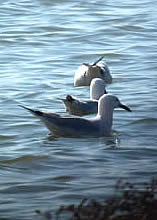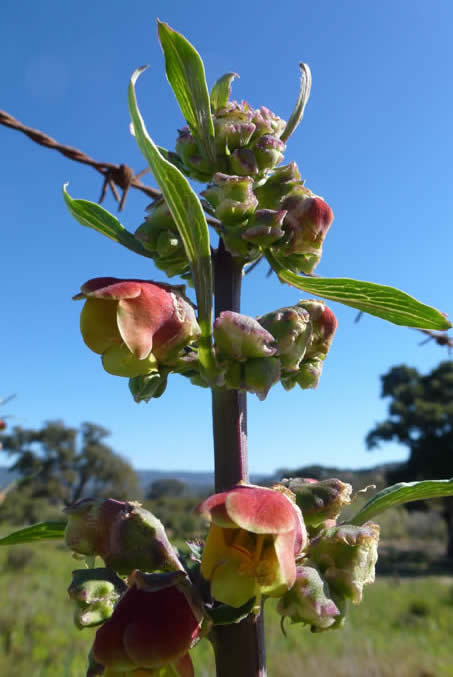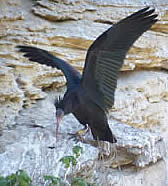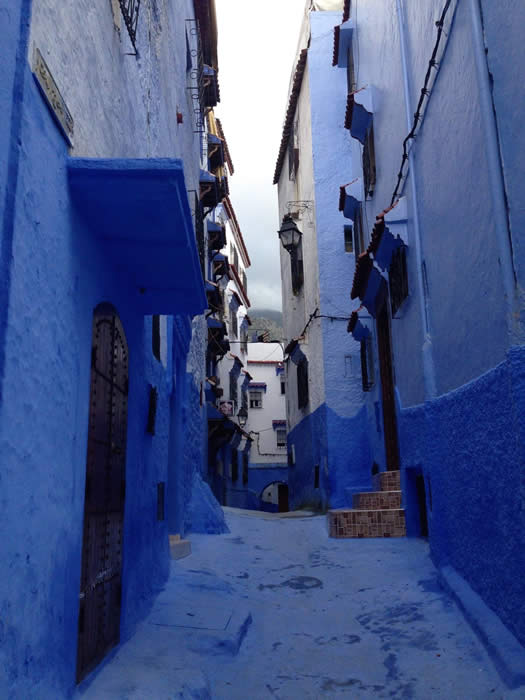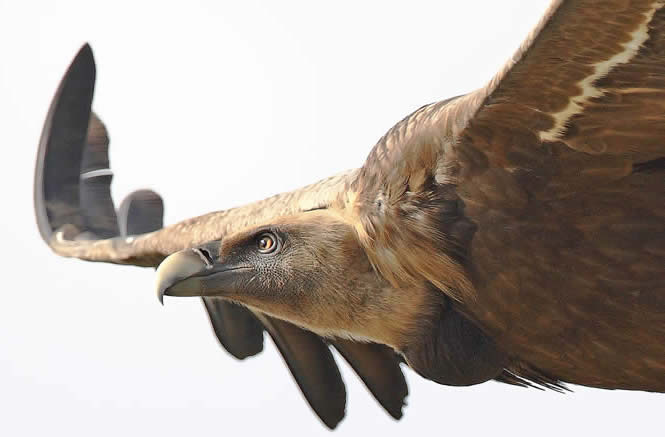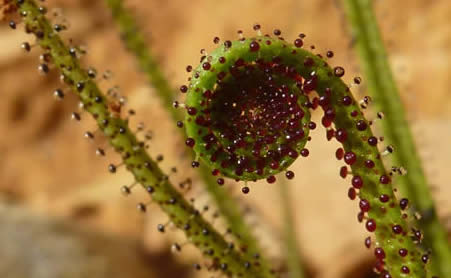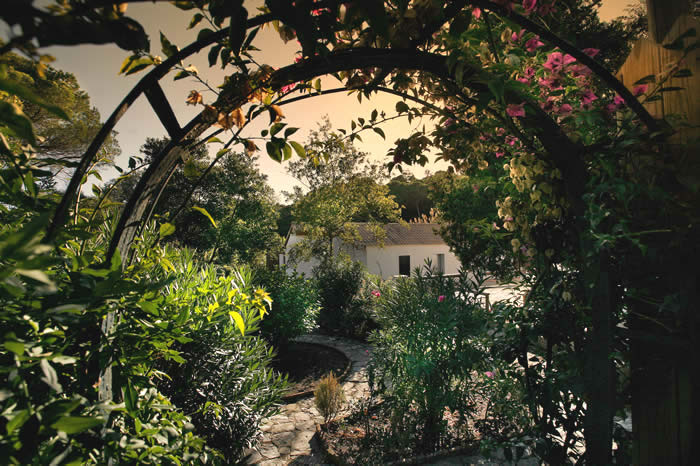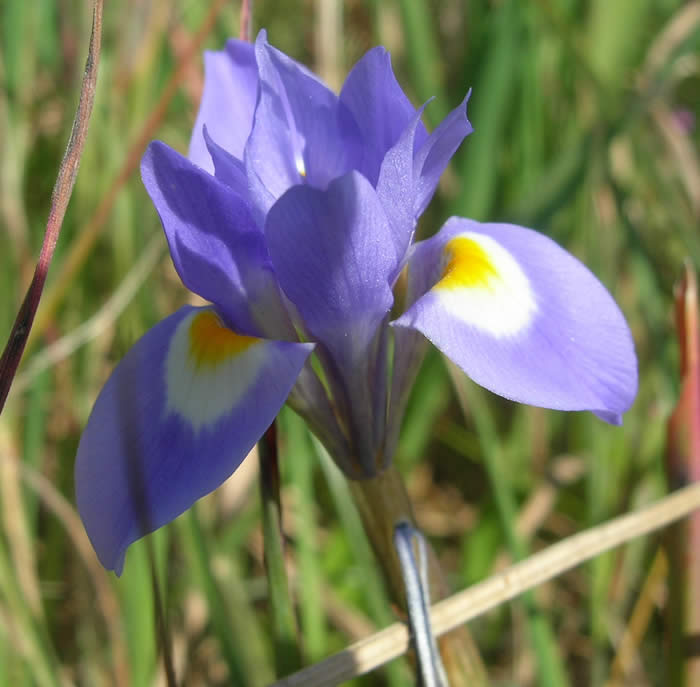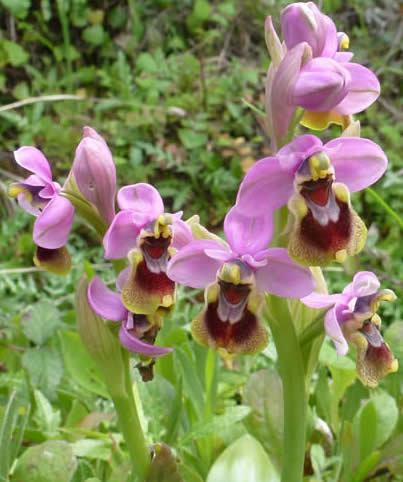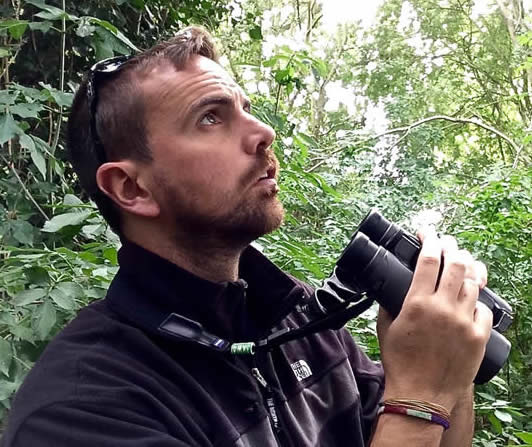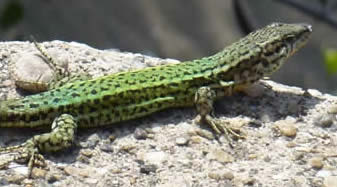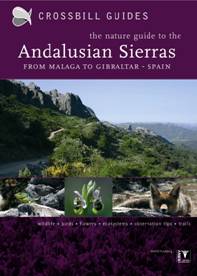Tarifa and Morocco 27 February – 7 March 2017
Birdwatching on two continents
Within sight of the Strait of Gibraltar and north Africa, the winter in southern Spain is mild and spring starts early. Late wintering birds mingle with early migrants, and early flowers include regional specialities. Temperatures can be mild, adding to the easy conditions for a relaxed, early season wildlife holiday.
On this holiday we will also be leaving Andalucia for three nights in Morocco. The Strait may be just 16 kilometres wide but, for wildlife and humans, it is a significant step. After crossing to Africa, we meet the aromas of spicy street food and mint tea, and familiar European birds become the African blue tit and Maghreb magpie. Other specialities include the stunning Moussier’s redstart and Levaillant’s woodpecker.
Bird migration is also a feature where the two great continents of Europe and Africa converge. Birds of prey aren’t moving on the huge scale of the autumn migration, but there should be a steady trickle of griffon vultures, along with black kites, eagles and lesser kestrels.
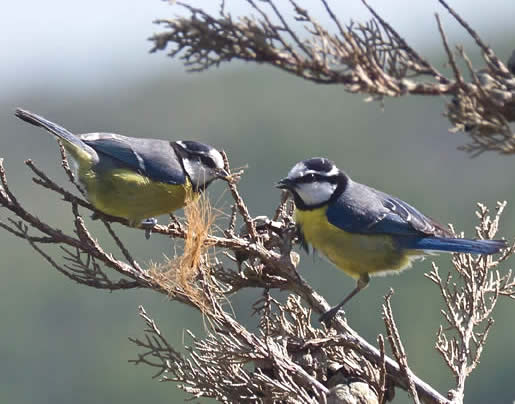

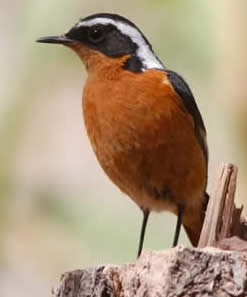
African blue tits, marsh owl (Simon Tonkin); Moussier's redstart (Igor Maiorano).
Andalucia
Wetlands – especially La Janda – support good numbers of wintering, passage and breeding birds. Among the waterbirds are herons, egrets, spoonbills and glossy ibises. Coastal birds include Audouin’s and slender-billed gulls, various waders and there’s often a Caspian tern with the Sandwich terns.
The northern bald ibis is one of the rarest birds in the world. This area has a reintroduction programme that is going well and this iconic species can be surprisingly easy to see.
Northern European robins, song thrushes and black redstarts overwinter here, alongside any number of blackcaps and chiffchaffs. Farmland supports winter finch flocks, buntings and larks. Interesting residents include firecrests, short-toed treecreepers, crested and Thekla larks.
Signs of spring will include the first martins and swallows, including red-rumped. White storks increasingly overwinter in the Iberian peninsula, but are also early migrants. Many hoopoes also stay year-round, and great spotted cuckoos will be arriving.
We stay at Huerta Grande, situated inland from Tarifa, within the southern tip of the Natural Park of Los Alcornocales (the cork oak). Cork oak woodland is one of the key habitats of the area, and our base is in a narrow gorge or ‘canuto’, the year-round moisture conserving a sub-tropical habitat unique in Europe.
Slender-billed gulls, Spanish festoon, Scrophularia sambucifolia, northern bald ibis. More photos from our Tarifa & Gibraltar holiday in 2015 on Facebook here.
Morocco
We make our own crossing, to northern Morocco by ferry, then begin our exploration of the African side of the Strait. Here we visit a variety of coastal and inland sites including Talassemtane National Park in the Rif Mountains.
Merja Zerga is a sweeping wetland on Morocco’s Atlantic coast. It is famous among birders as the last known winter haunt of the legendary slender-billed curlew, a bird now sadly presumed extinct. None have been seen here since 1995, but the drawings of those who journeyed here in the early 1990s can still be seen in the cherished bird log on display in a quiet estuary-side café.
Despite the curlews’ demise, Merja Zerga remains one of several magnificent wildlife sites on Morocco’s coastline. Here a variety of terns stop to feed and breed, while waders feed in their thousands, among them greenshank, spotted redshank, whimbrel and avocets. On quiet backwaters, red-knobbed coots and both white-headed and marbled ducks may usually be found more readily than in Spain. We’ll stay until dusk for the best chance of seeing a hunting African marsh owl.
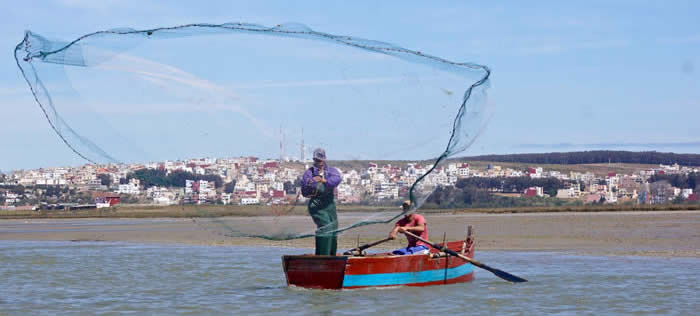
Fishing on a Moroccan wetland (Simon Tonkin)
Flowers
Many flowers have adapted to take advantage of the mild winter, including asphodels, squills, Barbary nut irises, early Ophrys orchids, paperwhite narcissi and the strange-looking friar’s cowl. Local species include Andalusian birthwort, Andalusian rhododendron Rhododendron ponticum baeticum and – though not yet in flower – Lusitanian sundew Drosophyllum lusitanicum, an unusual and very local carnivorous flower.
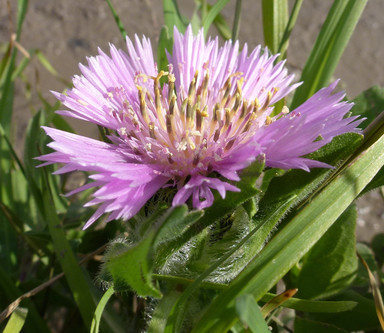
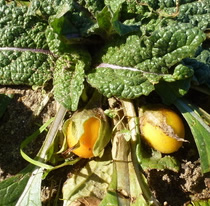
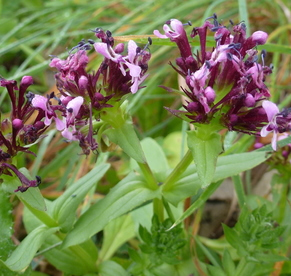
Some flowers from Tarifa: Centaurea pullata, mandrake, Fedia cornucopae, Friar's cowl Arisarum simorrhinum. More photos (Feb 2013) on Facebook.
Other wildlife
Our base at Huerta Grande has stripeless tree frogs and Moorish geckos. Andalucian wall lizard is a local speciality. Early butterflies could include Spanish festoon, Cleopatra and the monarchs resident in the area, plus migrants such as clouded yellow, Moroccan orange-tip, painted lady and green-striped white.
Holiday details
Price: £1,500 per person in twin room for eight nights (Monday to Tuesday)
Single room supplement: £120
En suite facilities
Flights: Scheduled easyJet flights Gatwick to Gibraltar, or Monarch flights Manchester to Gibraltar.
Deposit: £300
Maximum number (two leaders): 14
Leaders
Simon Tonkin has worked as an RSPB conservation officer for many years, specialising in the challenging job of stopping the decline of farmland wildlife. He also lectures in ornithology and regularly leads wildlife holidays.
Niki Williamson was a warden at the RSPB’s Ouse Washes nature reserve, then worked on projects for helping farmland birds in the Fens and subsequently managed the RSPB Eastern England’s farm wildlife advisory team. Both are in the process of becoming full-time nature guides based at Huerta Grande.

View over Chefchaouen, Morocco
Conservation project
SUPPORTING |
Migres monitors bird migration though the Strait of Gibraltar. A key role is measuring the impact of the many wind turbines in the area on migrant birds of prey. This includes advising on when to switch off turbines, when migration is heavy. |
Previous Honeyguide groups have supported The Ornithological Group of Estrecho (GOES). More on GOES here.
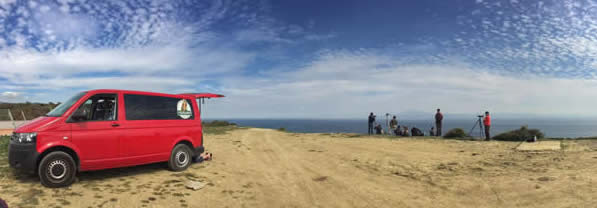
Birdwatching in the Strait.


